Introduction
The leadership is a process where a leader use to inspire followers and unite them to work for a common goal. The leadership is a skill that is necessary at all levels so that any work can be done with more effectiveness. This can be done by a good and efficient leader who has skills that are necessary for leading a team and unify them in a single unit so that tasks can be done in proper manner. Further, a leader has the power to bring great changes in ways of doing any task which makes hi/ her different from others (Malenfant, 2010).
The present report is based on leading change where Gary Yukl's taxonomy of leadership skills have been discussed. In addition, the report has given special emphasis on Apollo 13 movie in which various kinds of skills that are necessary for a leader has been focussed.
Task 1
Yukl's taxonomy of leadership skills
Gary Yukl is a renowned scholar who has done complete research on leadership skills and propounded effective leadership skills into three categories. He has given the name to categories as meta categories in which he identified different behaviours of a leader. These meta categories involve behaviours like task-oriented, relation oriented and change-oriented behaviour. These behaviours by a leader are applied as per the prevailing situations. Each behaviour of a leader as divided by Gary describes that some of the criteria like commitment towards tasks, flexibility, innovation etc. Must be present in a leader (Harding, 2010).
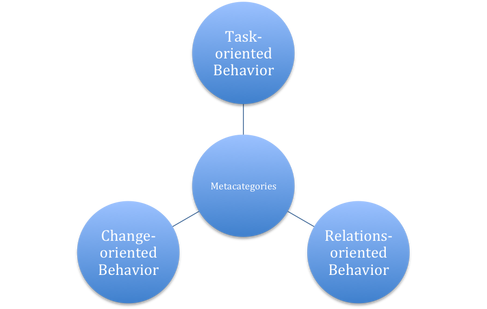
Illustration 1: Meta categories
Task-oriented behaviour (Technical skills)
- Planning: Here, the leader is expected to plan and determine the objectives so that resources can be collected as per the strategy. The leader has to make allocation of these resources as well on a priority basis. So, a leader has to do all kinds of managerial work while planning.
- Clarifying responsibility: The goals and objectives set by a leader has to be accomplished by achieving proper coordination among team members. For this, a leader has to make all teammates their roles and responsibilities so that everyone can put their efforts for completing tasks (Fullan, 2014).
- Monitoring: The leader will supervise the work of all group members, collect various information on working of team members and then he will also check for quality of work. Apart from this, it is also necessary that different internal conditions are also monitored by leader so that any adverse impacts on working of team can be minimised.
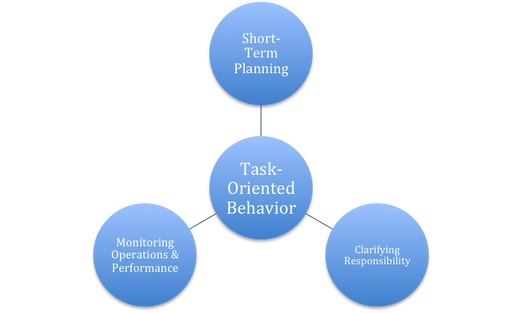
Illustration 2: Task-oriented behaviour
Relation oriented Behaviour (Interpersonal skills)
- Supporting: The leader has to act in a patient and relaxed manner so that his followers can feel free to share their ideas and feelings with leader. Further, friendly behaviour should be there between leader and followers with support so that team members can see the concern of leader for them.
- Development: The leader has to act like a teacher as well where he is responsible to develop the skills and talent of group. This will help in the proper and overall development of follower's personality and their confidence with professional advancement.
- Recognition: Every man needs a proper recognition and credit for their hard work as it develops a satisfaction in him. So, a leader should monitor work of team and give a proper appreciation to deserved ones. This helps in developing satisfaction and also motivates them to work hard.
- Consulting: The leader should always make the decision by taking viewpoints of its team as well (Alkahtani and et.al., 2011). He should encourage members to come up new ideas and suggestions so that an effective decision can be made.
- Empowerment: The leader should also attempt to develop decision-making skills among group members. This can be done by delegating authority to deserving teammates to make decisions on various occasions. Thus, a confidence and decision-making ability cab be developed.
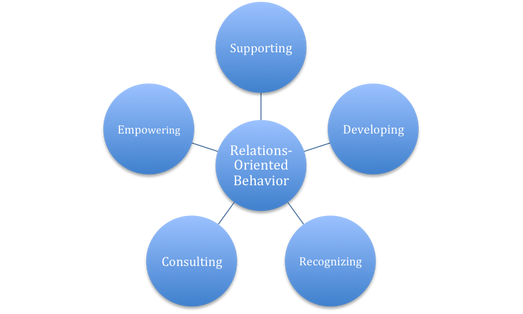
Illustration 3: Relation oriented behaviour
Change oriented behaviour (Conceptual skills)
- Scanning of the environment: The leader should always be attentive against various external situations existing in the form of threats and opportunities. This will help in making proper measures against threats and using opportunities for increasing efficiency. Thus, proper monitoring is required.
- Envisioning change: As per the different situations and changes in the environment, it is necessary to develop changes accordingly so that a proper pace can be kept to match with current conditions (Thoroughgood and et.al., 2012). The changes in various areas should be established by discussing it with team members and informing them about various effects of these changes for them. This will aid in getting more support from followers in implementing change.
- Encouraging innovation: The leader should always encourage team members to be creative and innovative in all kinds of work. This will give them added advantage with findings of new and interesting ways to accomplish tasks.
- Risk-taking: The leaders should also motivate the associates of group to take risks so that all members can become able to face difficult situations and apply their skills to solve them.
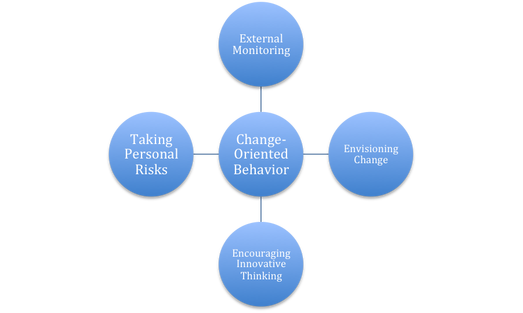
Illustration 4: Change oriented behaviour
Task 2
Technical skills applied in Apollo 13 mission
The technical skills of a leader as proposed by Yukl is a competency which is related to expertise in a particular field. The technical skills of a leader specify that a leader should have specific and expert knowledge related to accomplishing any work. This also refers to the ability of a person to make strategies as per the goals of the company (Hoffman and Lord, 2013). It is the responsibility of the leader to formulate strategies aligned with objectives. The leader applies his technical skills to clarify various roles and responsibilities of team members so that the tasks can be accomplished in proper way. Hereby, leader use to monitor the work of team as well so that quality can be maintained in working of the team. As per the mission of Apollo 13, when flight met with an accident, Kranz united his team and encouraged them to come up with a plan for the goal of bringing all astronauts to earth in a safe way.
He had a trust in skills of his team members that all of them can work in the best way in their mission. Hence, Mattingly was appointed to help the crew in successful landing on earth by restarting the spacecraft. Kranz was in charge of this mission which turned into a historic moment. It is evident that working in a spacecraft includes very critical tasks as this needs effective decision making. Kranz adopted different leadership methods as per the situations prevailing at the time of the Apollo 13 mission. As per the situation where main motto was moon landing was aborted due to technical difficulties happened at spacecraft. At this time, he took the decision to abort the mission and primarily focussed on saving all crew members on space flight (Allison and Goethals, 2013). Besides this, he trusted his all team members which is evident as he gave the decision making power to team members so that plans can be made to save all astronauts. along with this, he also took the approach of democratic decision making where he took consultation of all team to execute strategy.
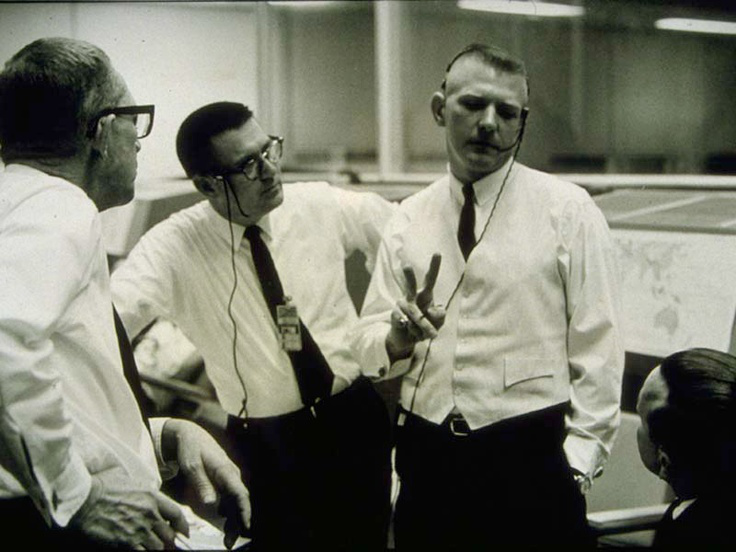
Illustration 5: Leadership of Gene Kranz
As a good leader, he was efficient to handle the emergency situation in a calm manner. because of his effective leadership skills, he was successful in uniting the team and made them to work with great enthusiasm. He took the help of simulation model where the same situation was created of spacecraft and recruited Ken Mattingly so that problem related to techniques can be improved. His great decision making power in the pressurised situation was the major skill that helped in the successful return of all astronauts. Here, technical skills of Kranz is apparent in the form of better strategy planning, allotting responsibilities to team members as per the situation and also monitoring the entire performance so that he can give better guidance to the team members. Kranz also had trust on his team that all individuals will perform their job in the best way. he also took the ideas of different members and applied it because of which the problem was solved. the faith of Kranz gave his team confidence as well due to which they were successful in solving the problem from such a distant place (Apollo 13 - Gene Kranz at Mission Control, 2013). The team was also confident that under the leadership of Kranz, failure is not an option.
Task 3
Motivation by Gene Kranz
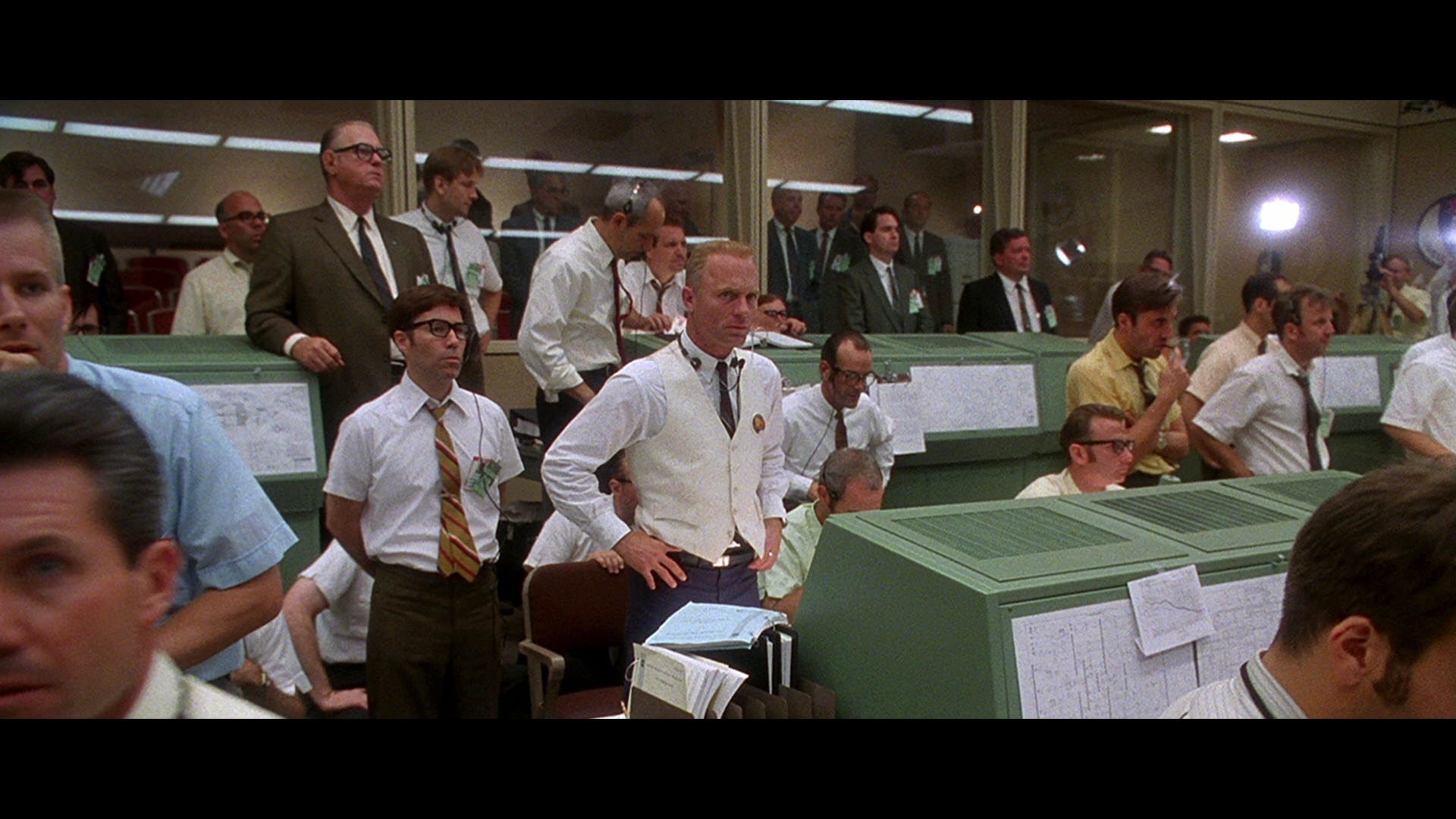
Illustration 6: Motivation by Kranz
The interpersonal skills of a leader include various aspects that are necessary to lead a team in an effective manner. These attributes include supporting, developing, empowering etc. The support given by the team leader to its team member plays a major role in this. At the time of Apollo 13 mission, Kranz was motivating his team members who were present at spacecraft and to those who were with him in this mission. He developed a feeling among them due to which all of them were motivated.
He had an objective of landing on the moon with his team which was failed due to technical mistakes. At that time, he took the decision of aborting the mission and set a new goal of bringing all astronauts safely to earth. He believed that a person cannot be successful in any task till he does not have faith on himself. Thus, it is necessary to have confidence while performing so that any critical problem can also be solved. With setting up of goal to bring all crew members back, he motivated all teammates to have faith.
In the technical mistake related to loss of oxygen, everyone was unable to find the reason behind it which was making all of them stressed (Pavur Jr, 2012). He was trying that his team remains focussed on mission and also ensured that all of them perform their duties well. He commanded in a calm voice to his team to remain cool and figuring out the problem without making it more worse. He was clear on his objective and without any feeling of panic which helped in motivating his team and building confidence among them.
Shared vision
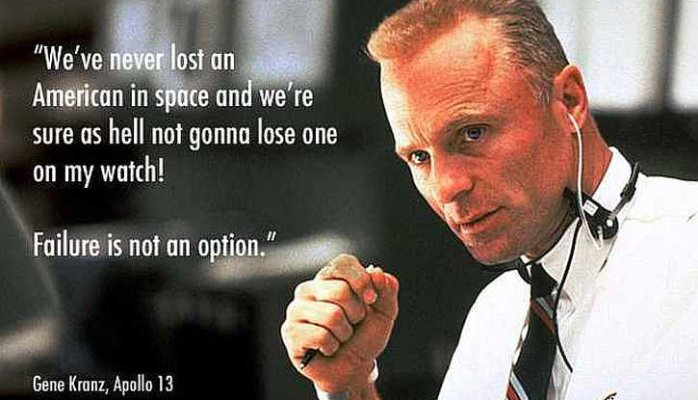
Illustration 7
The mission of Apollo 13 is termed as a 'Successful failure' in the history as though the mission of landing on the moon was failed, yet the mission of bringing home to all astronauts safely was the biggest success at that time. The situation where all crew members were losing their hope, Gene Kranz motivated all his team members by saying that failure is not an option which created a new confidence among all teammates. Besides this, Lovell's statement 'I intend to go home' was another phrase that built faith among the team. both the statements of Gary and Lovell attempted to set up a new vision so that solving the problem can be handled more effectively.
As per the interpersonal skills of a leader mentioned by Yukl, leader should be able to develop change and envision future. In the present situation of Apollo 13, both astronauts did their work in the right manner as they successfully developed a new enthusiasm among team members who had lost their hopes (Brett and Mckay, 2009). Apart from this, the leader should be able to make act as a supporting mentor at the time of crisis so that team can remain united. Gene gave the right empowerment to his team to make the right decision as per the situation. Here, it is also evident that conflicts may arise in teams but it is necessary that the group agree at a common vision which reduces the chances of failure.
Task 4
Conceptual skills
The conceptual skills of a leader refer to various abilities like to create a positive environment of change, encouragement to innovation, motivation for taking risks and correctly assess the environment to identify threats and opportunities. As per the situation prevailing in the spacecraft due to technical failures, the situation became quite pressurising and tensed. At this situation, first thing that Gene Kranz commanded to his team was to work out the problem. By this command, he meant to figure out the root cause of problem so that a right solution can be framed. Besides this, the entire team also ensured that all necessary technical arrangements are organised in a proper way to so that the team can face the challenge with right preparation. After the explosion, the first question raised by Kranz was, ' what do we have good in spacecraft?' By this question, he was intending to identify the best opportunity that can be utilised to solve the problem (Nguyen, 2010).
Here, the conceptual and better decision making power of Kranz is apparent. The spacecraft had lost its oxygen supply and engine also got problems, so Kranz made a decision to make a solution by utilising the best thing available at present in the space flight. Hence, he commanded to shut down the fuel cells so that spacecraft can consume less power and oxygen supply from one of the tanks can be used for longer time. This became possible by effective teamwork who was continuously working to find the solution of a problem through every manner.
For this, they were making efforts to collect all relevant and crucial information so that decision can be made quickly in the right manner. Apart from this, Kranz also ensured that his decision is supported by all team members and any change in situations can be applied without any difficulty. Thus, he was focussing on creating a positive environment so that changes can be implemented easily. On this mission, he made a comment that 'to gain victory, things which are needed to be the best is you, your team and all equipment so that you are going to use (Skakon and et.al., 2010). It was also evident here that the technical backgrounds of all team were different, yet they managed to work as a single unit supporting each other that helped them in achieving success.
Apart from all above-mentioned attributes, a leader must have the ability to take risks and also making his team to face challenges. Besides this, the entire team was encouraged to come up with innovation and creativity so that the problem can be solved by applying different strategies. Further, when members on spacecraft observed that thousands of people are working hard to bring them back, they were filled with encouragement and all of them worked to make a group effort to achieve a common objective (Selznick, 2011).
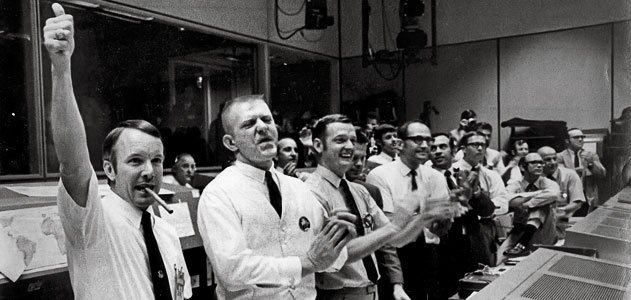
Illustration 8: Decision making that helped in success
Task 5
Leadership assessment of Gene Kranz
- Task-related behaviour: As per the leadership skills defined by Gary Yukl, task-oriented behaviour includes technical skills like making strategies, allotting responsibilities and also observing the performance of the team. Kranz possessed all these as he made the right strategy by utilising the best opportunity which was available after the explosion. He made a plan to cut the power usage so that less consumption of oxygen and fuel can be done. Besides this, he recruited Mattingly so that he can help in technical difficulties in solving the problems. This shows his ability to clarifying the right roles and responsibilities to team members. Further, he was trying to make teammates focussed on the major objective of bringing astronauts back to earth (Wheatley, 2011). Thus he was able to monitor team members and their activities as well so that they can work with concentration.
- Relation related behaviour: The relationship-oriented behaviour of leader states various attributes like support. The support and motivation given by Kranz played an important role in uniting the team and making them work for achieving a common objective. Besides this, he also developed skills among them to face difficult situations. He gave enough decision making power to all its team members as per the situation so that everyone can do the best to make the mission successful. He also consulted his team members before taking any decision and continuously encouraged them as well. He motivated all members by encouraging them to not lose their hopes and try to figure out the major problem. This helped them in achieving success as all were trying their best to collect all information and use it in the best way (Allison and Goethals, 2013).
- Change-related behaviour: Here the major responsibilities of a leader is to make proper scanning of internal and external environment so that identification of threats and opportunities available can be done. This was accomplished by Kranz through making a decision from available opportunity. Besides this, he also successfully developed innovative and creative ideas in team members to develop a solution for a problem. He made a positive environment for implementing change as well so that everyone can support his decision. Further, the major thing was, he truly developed a risk-taking attitude and facing challenges among his team members (Thoroughgood and et.al., 2012).
All the above-mentioned behaviours state the overall abilities and skills of Gene Kranz because of which he is well known as one of the best leaders.
Conclusion
The present report on leading change refers to the best of leadership aspects that were used by Gene Kranz on a well-known mission of Apollo 13. The report has discussed the leadership behaviour as per given by Gary Yukl which are task, relation and change-oriented. Besides this, the skills of leadership that are necessary are technical, conceptual and interpersonal skills. All these attributes and behaviours are well related to the case of the Apollo 13 mission which was aborted due to technical mistakes. The mission is considered as successful failure where a new mission of bringing all astronauts safe to the earth was successful. Further, the report states that the whole mission was achieved great success due to the efficient leadership of Gene Kranz who took the right decision at the right time along with proper motivation and guidance of his team.
References
- Alkahtani, A.H. and et.al., 2011. The impact of personality and leadership styles on leading change capability of Malaysian managers. Australian Journal of Business and Management Research.
- Allison, S.T. and Goethals, G.R., 2013. Heroic leadership: An influence taxonomy of 100 exceptional individuals. Routledge.
- Fullan, M., 2014. Leading in a culture of change personal action guide and workbook. John Wiley & Sons.
- Harding, T., 2010. Fostering creativity for leadership and leading change. Arts Education Policy Review.
- Hoffman, E.L. and Lord, R.G., 2013. A taxonomy of event-level dimensions: Implications for understanding leadership processes, behaviour, and performance. The Leadership Quarterly.
- Malenfant, K.J., 2010. Leading change in the system of scholarly communication: A case study of engaging liaison librarians for outreach to faculty. College & Research Libraries.
- Nguyen, H.N., 2010. The Impact of Leadership Behaviours and Organisational Culture on Knowledge Management Practices in Small and Medium Enterprises. Griffith University.
- Pavur Jr, E.J., 2012. Leadership for managers. The Psychologist-Manager Journal.



















